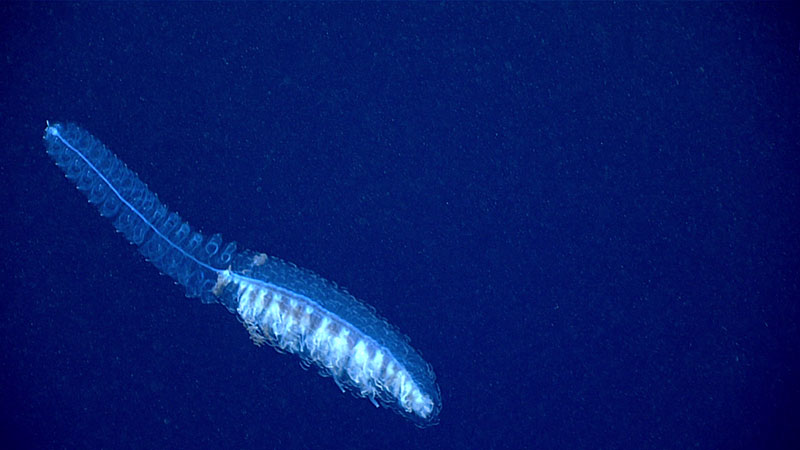September 28, 2020: Siphonophore

Image courtesy of the NOAA Office of Ocean Exploration and Research, Windows to the Deep 2018. Download larger version (jpg, 378 KB).
This siphonophore was seen while conducting midwater exploration at 880 meters (2,887 feet) depth at the end of a Windows to the Deep 2018 dive. The siphonophore’s swimming bells are visible on the left/top part of the organism while stinging cells that could pack a punch hang from the more opaque half.
Midwater transects at several depths were conducted at the end of this dive; the depths were selected based on data collected using the CTD (conductivity, temperature, depth) sensor during the remotely operated vehicle’s descent at the start of the dive. This particular transect was chosen due to the presence of a low temperature and high oxygen water mass detected on the way down.
The water column is the largest living space, per volume, on Earth. Learn more about why we explore the water column in this ocean fact.